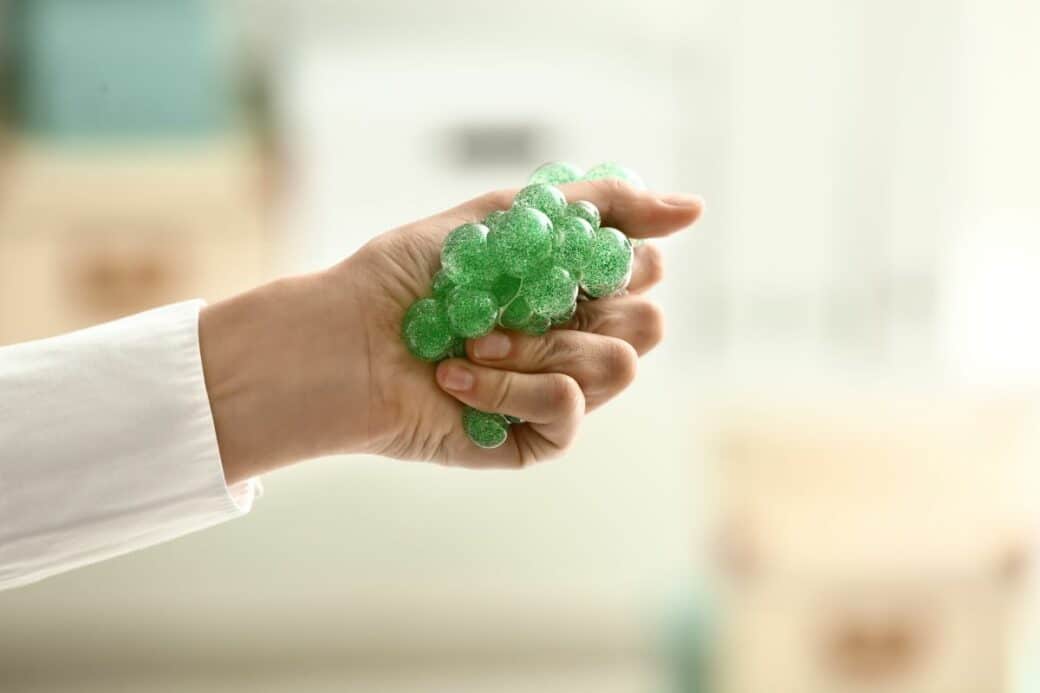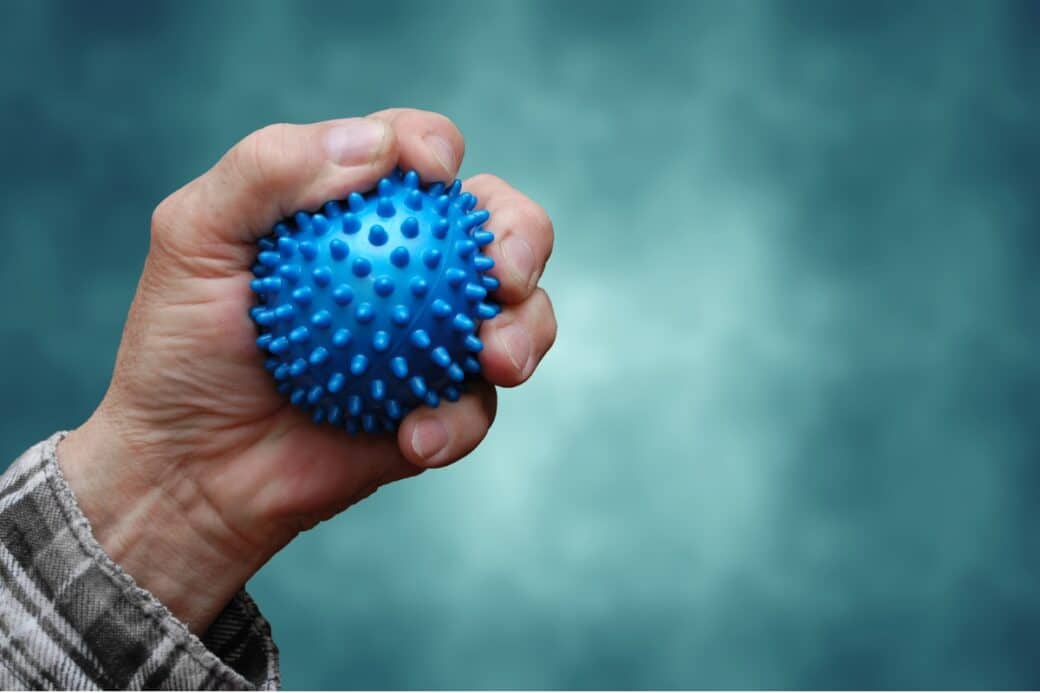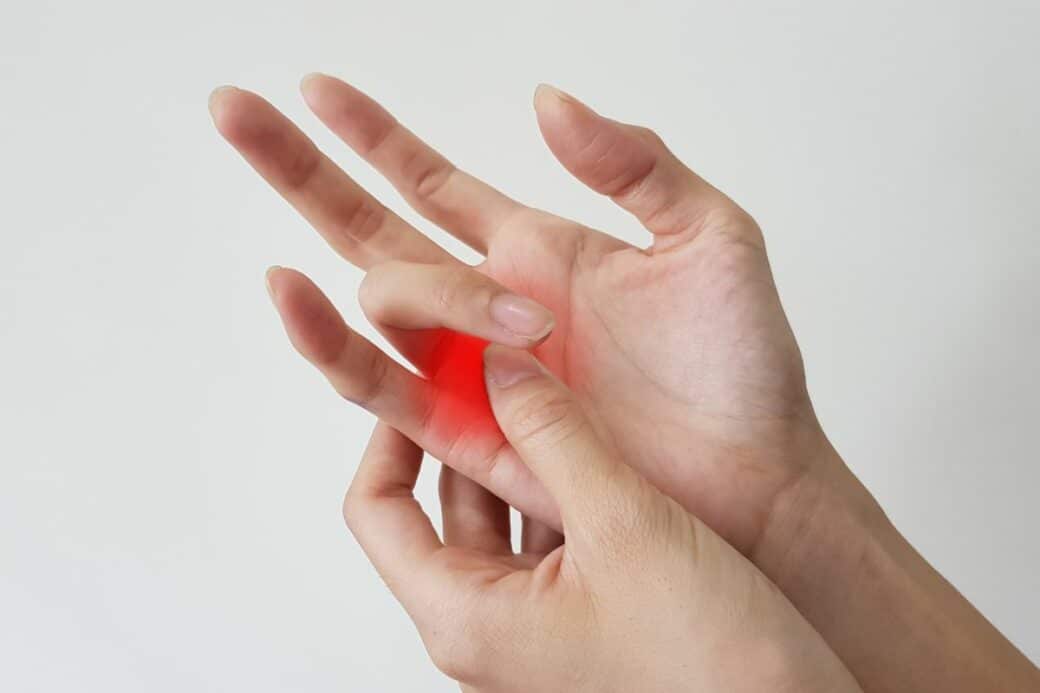Have you ever wondered why stress balls are so sticky? It turns out that the answer to this question lies in the unique composition of these squishy toys. Stress balls are typically made from a material called polyurethane, which gives them their soft and malleable texture. But it’s the addition of a special type of gel or foam inside the stress ball that makes it sticky when squeezed. This gel or foam is commonly referred to as “viscoelastic,” meaning it has both viscous (thick) and elastic (stretchy) properties. When you press down on the stress ball, this viscoelastic material sticks to your hands, providing a satisfying and tactile sensation that helps to relieve stress and anxiety. So next time you find yourself reaching for a stress ball, remember that it’s the combination of polyurethane and viscoelastic gel or foam that makes it wonderfully sticky.

Why Are Stress Balls Sticky: Understanding Stress Balls
Introduction to Stress Balls
Stress balls are small, squeezable objects that are commonly used as stress relievers. These handy little tools have gained popularity due to their ability to provide comfort and release tension. Whether you’re feeling overwhelmed at work, studying for exams, or simply needing a moment of relaxation, stress balls offer a convenient and effective solution.
Common Uses of Stress Balls
Stress balls can be used in various situations to alleviate stress and promote relaxation. Many people find them helpful during stressful moments at work, as the repetitive squeezing motion can help release built-up tension and increase focus. Stress balls are also popular among students, providing a way to relieve anxiety during exams or long study sessions. Additionally, stress balls can be used as exercise tools for the hands and fingers, helping to improve grip strength.
Various Types of Stress Balls
Stress balls come in a wide range of shapes, sizes, and materials. Some common types include foam stress balls, gel-filled stress balls, and silicone stress balls. Each type offers its own unique advantages and qualities, catering to different preferences and needs. Foam stress balls are lightweight and soft, making them comfortable to squeeze, while gel-filled stress balls provide a more malleable and squishy texture. Silicone stress balls, on the other hand, offer a durable and long-lasting option, with a slightly tacky surface that provides an enhanced grip.
Composition of Stress Balls
Main Materials Used in Manufacturing
Stress balls are typically made from a combination of materials that contribute to their squishy and pliable nature. The main materials used in manufacturing stress balls include foam, various types of rubber, and silicone. Foam stress balls are made from polyurethane foam, which is lightweight and easily molds into different shapes. Rubber stress balls, on the other hand, are made from natural or synthetic rubber, providing a more durable and springy texture. Silicone stress balls primarily consist of silicone, a synthetic material known for its flexibility and resistance to heat and chemicals.
Process of Making Stress Balls
The process of making stress balls involves several steps to ensure the final product is both functional and visually appealing. First, the chosen materials are mixed together in the appropriate proportions, taking into consideration the desired texture and durability. The mixture is then molded into the desired shape using specialized molds. Once the stress balls are formed, they are often coated with a thin layer of powder or oil to enhance their tactile properties. Finally, the stress balls are packaged and ready for distribution.
Reasons for Sticky Stress Balls

Role of Material in the Stickiness of Stress Balls
The stickiness of stress balls can be attributed to the properties of the materials used in their manufacturing. Foam stress balls, for example, are often coated with a thin layer of oil or powder to prevent them from sticking together. However, over time, this coating may wear off, causing the stress balls to become sticky. Rubber and silicone stress balls, on the other hand, may naturally have a slightly tacky surface due to the properties of the materials. This tackiness can contribute to the overall stickiness of the stress balls.
Impact of Humidity and Temperature
Humidity and temperature play a significant role in the stickiness of stress balls. High humidity levels can cause moisture to accumulate on the surface of the stress ball, resulting in a stickier texture. Similarly, elevated temperatures can soften the materials used in the stress ball, making them more prone to sticking. On the other hand, low humidity and cooler temperatures can help reduce the stickiness of stress balls. It’s important to keep these factors in mind when using and storing stress balls to maintain their desired texture.
Effect of Frequent Use and Wear and Tear
Frequent use and wear and tear can also contribute to the stickiness of stress balls. Over time, the oils and sweat from our hands can transfer onto the surface of the stress ball, causing it to become sticky. Additionally, small particles, such as dust and dirt, can accumulate on the stress ball, further enhancing its stickiness. Regular cleaning and maintenance can help reduce the stickiness caused by these factors and prolong the lifespan of the stress ball.
Role of Silicone in Stress Ball Stickiness
What is Silicone
Silicone is a synthetic polymer that is often used in various applications due to its unique properties. It is composed of silicon, oxygen, carbon, and hydrogen atoms, resulting in a flexible and rubber-like material. Silicone is known for its durability, heat resistance, and non-toxic nature. These qualities make it an ideal choice for manufacturing stress balls.
Why Silicone is Used in Stress Balls
Silicone is used in stress balls for several reasons. Its flexibility allows for the creation of stress balls with different shapes and designs, catering to the preferences of users. Additionally, silicone has excellent heat resistance, ensuring that stress balls can withstand prolonged squeezing without deforming or melting. Furthermore, silicone is non-toxic and safe to handle, making it suitable for individuals of all ages.
How Silicone Contributes to Stress Ball Stickiness
Silicone contributes to the stickiness of stress balls due to its intrinsic properties. The surface of silicone stress balls is slightly tacky, providing an enhanced grip when squeezed. This stickiness can be beneficial for individuals who prefer a more secure and controlled grip. However, prolonged use or exposure to high humidity can exacerbate the stickiness of silicone stress balls. Regular cleaning and maintenance are essential to preserve the desired texture and prevent excessive stickiness.
Importance of Stickiness in Stress Balls
Stress Ball Stickiness for Comfort and Grip
The stickiness of stress balls plays a crucial role in providing comfort and enhancing grip. When a stress ball is slightly sticky, it offers a pleasant sensation against the skin, adding to the overall tactile experience. The stickiness allows the stress ball to adhere to your hand, providing a secure and comfortable grip during use. This is particularly beneficial for individuals with weaker hand muscles or those seeking better control over their squeezing motion.
Stickiness for Sensory Perception
The stickiness of stress balls also enhances sensory perception. As you squeeze a sticky stress ball, the tackiness provides a unique feedback that can stimulate the senses and promote relaxation. The sensation of the stress ball adhering to your hand adds an additional layer of interaction, making the experience more engaging and satisfying. This sensory stimulation can help take your mind off stress and encourage a state of calm.
Stickiness for Enhancing Stress Relief
The stickiness of stress balls contributes to their effectiveness as stress relief tools. The slight resistance and adherence to your hand create a subtle resistance when squeezing the stress ball, engaging the muscles in your hand and forearm. This resistance can help relieve built-up tension and promote muscle relaxation. The stickiness also encourages a mindful approach to stress relief, as you focus on the sensation and engage in repetitive squeezing motions to alleviate stress.
How to Clean Sticky Stress Balls
Essential Steps for Cleaning
Cleaning sticky stress balls is a simple process that can restore their original texture and reduce stickiness. To clean a sticky stress ball, start by rinsing it with warm water to remove any surface dirt and debris. Next, apply a small amount of mild soap or detergent to a clean cloth and gently scrub the stress ball in a circular motion. Rinse the stress ball thoroughly to ensure all soap residue is removed. Finally, pat dry the stress ball with a clean towel and allow it to air dry completely before using it again.
Precautions to Take While Cleaning
While cleaning sticky stress balls, it’s important to take some precautions to avoid damaging the materials. Avoid using harsh chemicals, abrasive cleaners, or excessive force, as these can cause the stress ball to deteriorate or lose its original shape. Additionally, make sure not to submerge stress balls that contain foam or gel filling, as the water may penetrate the filling and cause damage. Take care to follow the manufacturer’s instructions and recommendations when cleaning your stress ball to ensure its longevity.
Maintaining the Stickiness After Cleaning
After cleaning your sticky stress ball, you may notice that its original tackiness has diminished. To restore some of the stickiness, you can lightly dust the stress ball with a small amount of talcum powder or cornstarch. This thin layer of powder will help reduce friction and prevent the stress ball from becoming excessively sticky again. It’s important to apply only a minimal amount of powder to avoid altering the texture or feel of the stress ball.
Non-Sticky Stress Ball Alternatives
List of Non-Sticky Stress Ball Materials
For individuals who prefer non-sticky stress balls, there are alternative materials available that offer a different tactile experience. Some common non-sticky stress ball materials include thermoplastic elastomers (TPE), polyurethane (PU) foam, and fabric-filled stress balls. TPE stress balls have a smooth and silky texture, while PU foam stress balls are lightweight and soft. Fabric-filled stress balls, on the other hand, provide a unique sensory experience with their soft and plush exterior.
Pros and Cons of Non-Sticky Stress Balls
Non-sticky stress balls offer their own set of advantages and disadvantages compared to sticky stress balls. The smooth and non-tacky surface of non-sticky stress balls can be appealing to those who prefer a cleaner and drier tactile experience. They are less likely to accumulate dirt and dust, making them easier to maintain. However, the lack of stickiness may result in a slightly less secure grip, which can be a consideration for individuals seeking a firm and controlled squeeze.
Dealing with Excessively Sticky Stress Balls
Conditions that Lead to High Stickiness
Excessively sticky stress balls can be caused by various factors, including high humidity levels, prolonged use without cleaning, and exposure to oily or dirty surfaces. These conditions can lead to a buildup of moisture, oils, and debris on the surface of the stress ball, resulting in a significantly stickier texture. Additionally, older stress balls or those made from lower-quality materials may naturally become excessively sticky over time.
How to Reduce Excessive Stickiness
To reduce excessive stickiness in stress balls, thorough cleaning is vital. Follow the cleaning steps outlined earlier to remove any dirt and oils from the surface of the stress ball. If the stickiness persists, you can try lightly dusting the stress ball with talcum powder or cornstarch to absorb excess moisture and reduce friction. However, it’s important not to overdo it with the powder, as this can affect the texture and feel of the stress ball. If the stickiness continues to be a problem, it may be time to consider replacing the stress ball.
Stress Ball Maintenance and Care
Proper Use to Avoid Excessive Stickiness
To avoid excessive stickiness in stress balls, proper use and handling are essential. Avoid using stress balls with dirty or oily hands, as this can transfer contaminants and contribute to stickiness. It’s also important to store stress balls in a cool, dry place away from direct sunlight and sources of heat. This will help prevent the materials from softening and becoming more prone to sticking. By practicing good hygiene and storage habits, you can maintain the desired texture and prolong the lifespan of your stress ball.
Routine Maintenance Tips
Regular maintenance is key to keeping stress balls in optimal condition. Clean your stress balls periodically, especially if you use them frequently or notice excessive stickiness. Store them in a clean and dry environment, preferably in a container or bag to protect them from dust and dirt. Additionally, inspect your stress balls regularly for any signs of wear and tear, such as cracks or tears in the material. If you notice any damage, it’s best to replace the stress ball to ensure safe and effective use.
When to Replace Your Stress Ball
Despite proper care and maintenance, stress balls may eventually wear out and lose their original properties. Signs that indicate it’s time to replace your stress ball include significant loss of stickiness, visible deterioration of the materials, or a change in texture that no longer provides the desired tactile experience. It’s important to be mindful of the condition of your stress ball to ensure its effectiveness as a stress relief tool.
Conclusion: The Sticky Nature of Stress Balls
Summary of Stress Ball Stickiness
Stress balls can be both sticky and non-sticky, depending on the materials used and environmental factors. The stickiness of stress balls primarily comes from the properties of the materials, such as foam, rubber, or silicone. Silicone, in particular, is known for its stickiness and is often used in stress balls to enhance grip and sensory perception. Stickiness in stress balls offers comfort, improved sensory experience, and enhanced stress relief.
Future Innovations for Stress Ball Design
As our understanding of stress relief techniques advances, so too does the potential for innovations in stress ball design. Researchers and manufacturers are continually exploring new materials and technologies to improve the functionality and user experience of stress balls. Future innovations may include materials with adjustable levels of stickiness, customizable shapes and textures, and even smart stress balls that can provide real-time feedback on stress levels.
In conclusion, stress balls are valuable tools for stress relief and relaxation. Understanding the factors that contribute to their stickiness allows us to better care for and maintain these portable stress relievers. Whether you prefer a slightly sticky texture or a non-sticky alternative, stress balls offer a versatile and effective way to alleviate stress and promote a sense of calm in our busy lives.




